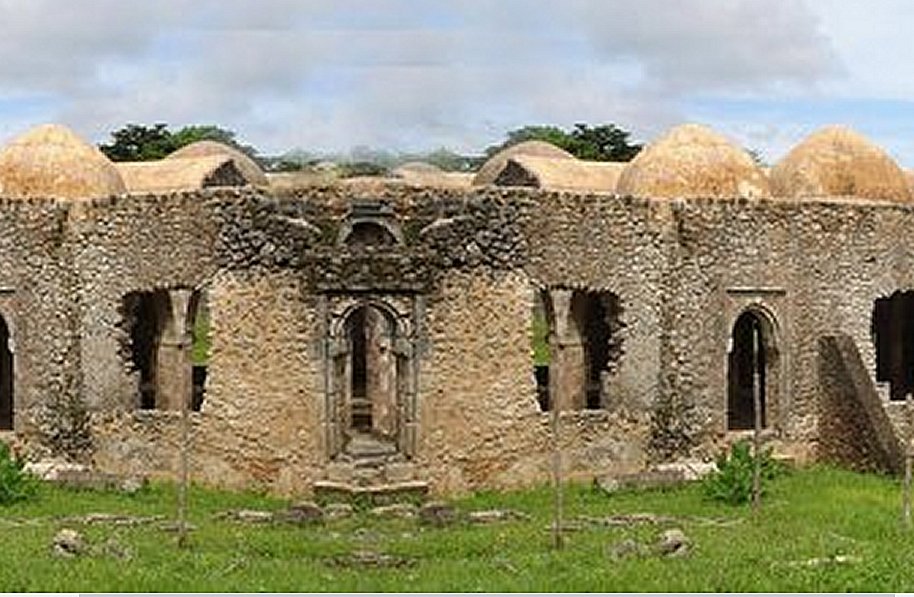Ancient Ruins Of Kilwa Kisiwani And Songo Mnara: Great African Ports Long Abandoned And Forgotten
A. Sutherland - AncientPages.com - In ancient times, Kilwa Kisiwani and Songo Mnar were two great African ports located on two islands close to each other just off the Tanzanian coast about 300km south of Dar es Salaam.
From the 13th to the 16th century, the merchants of Kilwa dealt in gold, silver, pearls, perfumes, Arabian crockery, Persian earthenware and Chinese porcelain.
Historical documents such as the Kilwa Chronicle report that the city began to thrive under the founding Shirazi dynasty of sultans.
The Kilwa Chronicle is the name of a collected genealogy of the sultans who ruled the Swahili culture from Kilwa. Two texts, one in Arabic and one in Portuguese, were written in the early 1500s, and together they provide a glimpse into the history of the Swahili coast, with particular emphasis on that of Kilwa Kisiwani and its sultans of the Shirazi dynasty.
According to local historians, the island was settled in the 11th century by Ali bin Al-Hasan of Persia, who ruled over the island for 40 years. The dynasty he founded was credited with having established Kilwa as a significant trade centre. Over the next two centuries, various successors ruled and were overthrown, but they built impressive coral-stone houses and lavish mosques – the remains of which can still be seen today.
In 1331-1332, the great traveler, Ibn Battouta made a stop here and described Kilwa as one of the most beautiful cities of the world.

Capture of Kilwa. A 1572 depiction of the city of Kilwa from Georg Braun and Frans Hogenberg's atlas Civitates orbis terrarum. Image via wikipedia.
The prosperity of the port city remained intact until the last decades of the 14th century, when turmoil over the ravages of the Black Death took its toll on international trade.
In 1505, the Portuguese took over the coastline and assumed control of Kilwa Kisiwani. They killed the majority of the residents and replaced the Arab palaces with forts and the decline of the two islands began. Today, a small number of local fishermen live on the island, but for the most part it is an abandoned city filled with crumbling mosques, remnants of once glorious palaces, and ancient tombs.
See also:
Africa’s Secrets: Unsolved Mystery Of Gedi Ruins Protected By The ‘Old Ones’ – Why Did People Leave?
Great Ruins of Zimbabwe: Unsolved Secrets Of Bizarre Buildings Without Windows And Doors
The archaeological excavations at Kilwa recovered the most Chinese goods of any Swahili town, including a profusion of Chinese coins.
Nevertheless, the remains of Kilwa Kisiwani cover much of the island with many parts of the city still unexcavated.
The ruins of Songo Mnara, at the northern end of the island, consist of the remains of five mosques, a palace complex, and some thirty-three domestic dwellings constructed of coral stones and wood within enclosing walls.
The islands of Kilwa Kisiwani and Songo Mnara bear exceptional testimony to the expansion of Swahili coastal culture, the lslamisation of East Africa and the extraordinarily extensive and prosperous Indian Ocean trade from the medieval period up to the modern era.
We still know extremely little about these two ancient ports that were most important of about thirty-five Swahili Coast trading communities on the Indian Ocean during the 11th through 16th centuries AD.
Both Kilwa Kisiwani and Songo Mnara - NESCO World Heritage sites since 1981 - were magnificent ancient African cities destroyed by the Europeans.
Written by – A. Sutherland - AncientPages.com Senior Staff Writer
Copyright © AncientPages.com All rights reserved. This material may not be published, broadcast, rewritten or redistributed in whole or part without the express written permission of AncientPages.com
More From Ancient Pages
-
 Impressive Pyramid Of Kukulkan (El Castillo’) At Chichen Itza
Civilizations | Feb 7, 2017
Impressive Pyramid Of Kukulkan (El Castillo’) At Chichen Itza
Civilizations | Feb 7, 2017 -
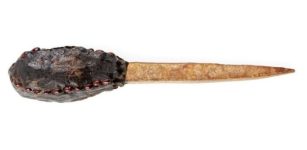 Tomography And Radiocarbon Dating Used To Examine Australian Aboriginal Knife
Archaeology | Jul 3, 2023
Tomography And Radiocarbon Dating Used To Examine Australian Aboriginal Knife
Archaeology | Jul 3, 2023 -
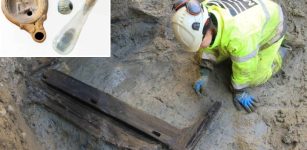 First Complete Roman Funerary Bed Found In Britain
Archaeology | Feb 19, 2024
First Complete Roman Funerary Bed Found In Britain
Archaeology | Feb 19, 2024 -
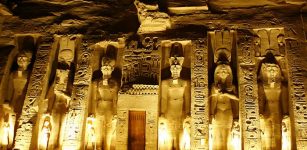 Abu Simbel – Spectacular Ancient Egyptian Temples Unique In Design And Size
Featured Stories | Jun 12, 2021
Abu Simbel – Spectacular Ancient Egyptian Temples Unique In Design And Size
Featured Stories | Jun 12, 2021 -
 The Battle Of The ‘Cloudships’ – Strange And Unexplained Sightings In The Skies
Featured Stories | Jun 14, 2019
The Battle Of The ‘Cloudships’ – Strange And Unexplained Sightings In The Skies
Featured Stories | Jun 14, 2019 -
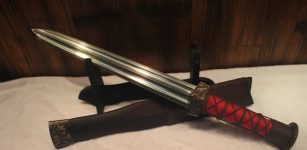 Deeper Look Into Chinese Swords Throughout The History Of The Dynasties
Featured Stories | Sep 19, 2018
Deeper Look Into Chinese Swords Throughout The History Of The Dynasties
Featured Stories | Sep 19, 2018 -
 Archaeologists Investigate The Mysterious Disappearance Of Human Skeletons In England And Wales During The 5th Century
Archaeology | Oct 16, 2024
Archaeologists Investigate The Mysterious Disappearance Of Human Skeletons In England And Wales During The 5th Century
Archaeology | Oct 16, 2024 -
 Why Is The Hungry Ghost Festival Celebrated In August?
Ancient Traditions And Customs | Aug 12, 2019
Why Is The Hungry Ghost Festival Celebrated In August?
Ancient Traditions And Customs | Aug 12, 2019 -
 Amergin: First Druid And ‘Wondrously Born’ Son Of Mil, Founder Of Poetry, Was Judge In Irish Mythology
Celtic Mythology | Mar 3, 2022
Amergin: First Druid And ‘Wondrously Born’ Son Of Mil, Founder Of Poetry, Was Judge In Irish Mythology
Celtic Mythology | Mar 3, 2022 -
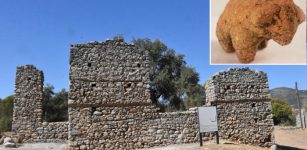 Children’s Toys Among Roman-Era Artifacts Unearthed At Ancient City Of Beçin Turkey
Artifacts | Oct 14, 2020
Children’s Toys Among Roman-Era Artifacts Unearthed At Ancient City Of Beçin Turkey
Artifacts | Oct 14, 2020 -
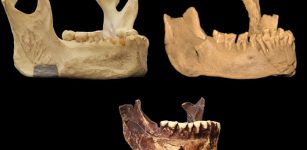 Mysterious Jawbone May Represent Earliest Presence Of Humans In Europe
Archaeology | Dec 7, 2022
Mysterious Jawbone May Represent Earliest Presence Of Humans In Europe
Archaeology | Dec 7, 2022 -
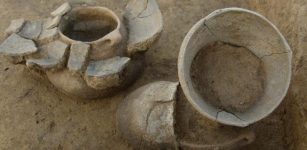 New DNA Study Links Early Europeans’ Cultural And Genetic Development Over Several Thousand Years
Archaeology | Aug 9, 2023
New DNA Study Links Early Europeans’ Cultural And Genetic Development Over Several Thousand Years
Archaeology | Aug 9, 2023 -
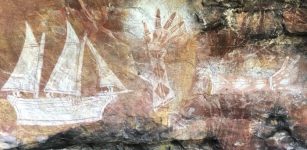 Map Of Hidden NT Landscape Where First Australians Lived More Than 60,000 Years Ago
Archaeology | May 5, 2023
Map Of Hidden NT Landscape Where First Australians Lived More Than 60,000 Years Ago
Archaeology | May 5, 2023 -
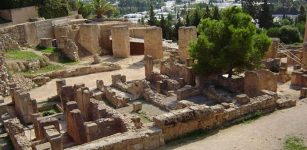 Carthage: Prosperous Phoenician Colony That Became Dominant Power In The Western Mediterranean
Featured Stories | May 21, 2020
Carthage: Prosperous Phoenician Colony That Became Dominant Power In The Western Mediterranean
Featured Stories | May 21, 2020 -
 Mysterious Lost Tartessian Civilization And Its Ancient Tablet With Paleo-Hispanic Alphabet
Archaeology | Jun 15, 2024
Mysterious Lost Tartessian Civilization And Its Ancient Tablet With Paleo-Hispanic Alphabet
Archaeology | Jun 15, 2024 -
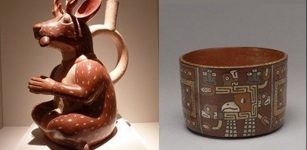 Genes And Languages: Development Of Pre-Incan Culture In Central Andes
News | Oct 26, 2020
Genes And Languages: Development Of Pre-Incan Culture In Central Andes
News | Oct 26, 2020 -
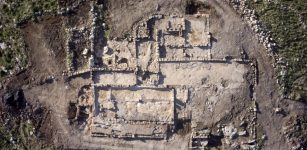 Impressive 2,700-Year-Old Farmhouse And 1,500-Year-Old Monastery Uncovered In Rosh Ha-‘Ayin
Archaeology | Dec 30, 2015
Impressive 2,700-Year-Old Farmhouse And 1,500-Year-Old Monastery Uncovered In Rosh Ha-‘Ayin
Archaeology | Dec 30, 2015 -
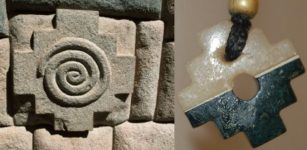 Mysterious Chakana – Sacred Inca Cross And Its Connection To The Southern Cross Constellation
Ancient Symbols | Sep 15, 2018
Mysterious Chakana – Sacred Inca Cross And Its Connection To The Southern Cross Constellation
Ancient Symbols | Sep 15, 2018 -
 Cupbearer Was Privy To Conversations And Political Secrets Hidden Behind Closed Doors
History | Feb 3, 2025
Cupbearer Was Privy To Conversations And Political Secrets Hidden Behind Closed Doors
History | Feb 3, 2025 -
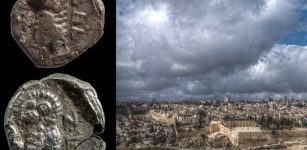 Extremely Rare And Tiny Biblical Coins Discovered Near The Temple Mount
Archaeology | May 30, 2018
Extremely Rare And Tiny Biblical Coins Discovered Near The Temple Mount
Archaeology | May 30, 2018

